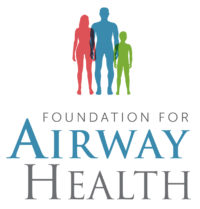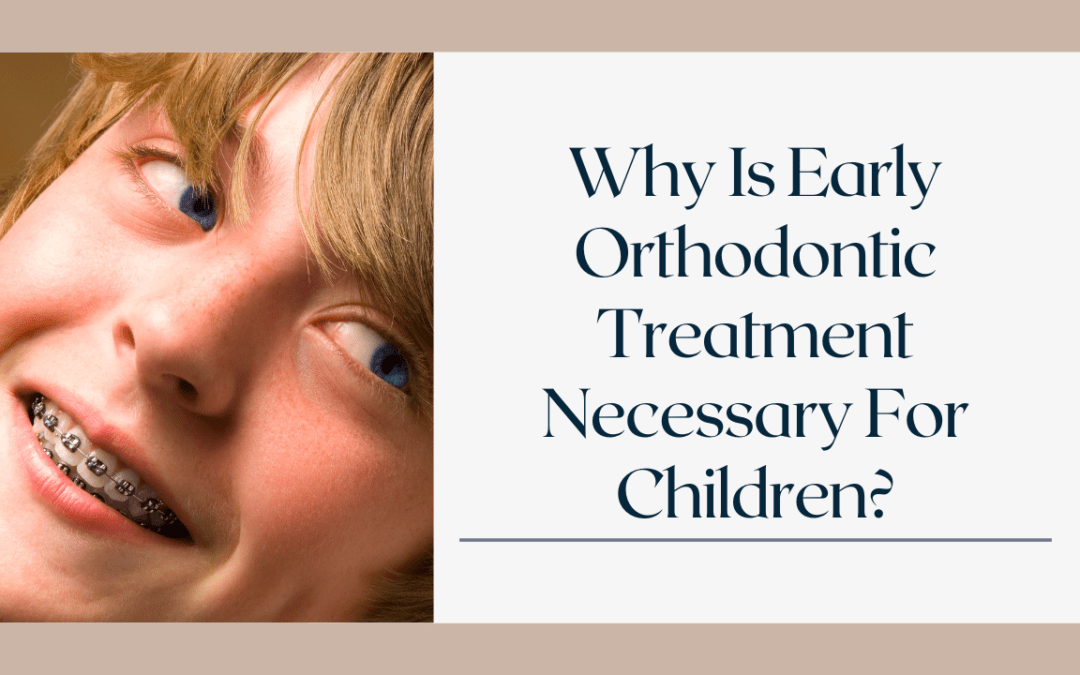My team and I are immersed in the airway orthodontic world and spend so much time helping parents understand why early orthodontic treatment is necessary for children. It is the one area that parents tend to go cross-eyed when I’m explaining why just putting braces on a mouth breathing kid is a terrible idea. Why just using braces to cosmetically straighten teeth is a waste of time and money.
So this month, I decided to talk about craniofacial development, early orthodontic treatment, airway orthodontics and braces in an attempt to distill the information down to something that you can find useful!
Why do more children need braces these days?
Because the face is not developing correctly. This is why children need early orthodontic treatment! The two most important bones of the face, the mandible and maxilla, are not growing big enough.
This can happen for several reasons. Here are two of the biggest reasons.
- Children are not being fed nutritious, nutrient dense, whole foods but instead are eating baby food out of pouches, drinking applesauces, squeezing yogurt out of a tube, living off smoothies and chicken nuggets. These types of foods do not require much effort in the form of mastication with muscles. The physical act of chewing causes facial growth. Do you see how a child who doesn’t use the muscles will have too small of a bone to hold all of the teeth without crowding?
- Children are mouth breathing and it’s not being investigated and corrected.
Nasal breathing puts an expansive force on the face. When a child is mouth breathing, they end up with a mouth breather face. The face grows down, long and narrow instead of forward and up.
What age should a child first visit the orthodontist?
Even though the American Orthodontic Association doesn’t recommend a screening until age 7, that may be too late to start making arch development changes in children who need it.
There isn’t a hard and fast answer to this question. I always encourage parents to watch for misguided craniofacial development and seek out an airway focused orthodontist instead of asking their general dentist or pediatrician. Often, those providers who aren’t skilled in early orthodontic treatment, are going to dispense advice that might be regretful later.
Some of the providers that I work with have started early orthodontic intervention as early as age 4 in a child who desperately needed it.
If you seek out an early orthodontic treatment provider, he or she will help you understand what timeframe will apply to your child.
Why is an orthodontic evaluation important for children?
To identify misguided craniofacial growth and to determine what early orthodontic treatment is needed.
Some children need arch development (more space) before braces will even be considered. An orthodontic evaluation allows you to work in offensive mode instead of defensive mode!
What is “airway orthodontics”?
Airway orthodontics is not a widely recognized term but it basically describes how an orthodontist practices or thinks. An airway focused orthodontist understands that cosmetically straightening teeth is not a healthy answer. Old school thinking believes that malocclusion (crowded, crooked teeth) is the problem and moving teeth is the answer. Airway orthodontists understand that when a child has a better airway, he or she will have a better life. These orthodontists understand that soft tissue dysfunction is the etiology of malocclusion and they look for better ways to address the root cause. Airway orthodontists live and breathe by early orthodontic treatment!
The problem is not really about the teeth. It is about the body seeking equilibrium. Malocclusion is the body’s solution to an imbalance. Dr. Barry Raphael believes “If your orthodontist is only seeking to straighten the teeth, then he or she is doing so in avoidance or ignorance of the real problem.”
Airway orthodontists have stopped worrying about the crooked teeth, and are now focused on what caused them to be crooked. Airway orthodontists believe that when you start seeing the problem as being something other than the teeth, then you start looking for very different solutions. One of the first goals will be how to get your child breathing through the nose. Another will be how to help your child get the tongue to the roof of the mouth.
Why is it all about the airway?
Straight teeth are nice and all but the correct development of the airway means that a person gets adequate oxygen and isn’t deprived. This is news to many parents. When orofacial myofunctional disorders are present the facial structure can be altered. When the maxilla (the upper jaw) does not grow large enough forward and out, the rest of the face may suffer. Similar to a lid on a box, the mandible (lower jaw) will follow the shape of the maxilla. When the mandible grows sufficiently forward, it brings with it the tongue, soft tissues, and airway. So when the maxilla fails to grow adequately, the airway may be compromised.
The reason it’s “all about the airway” is that sufficient oxygenation is necessary for optimal health and development. Sleep concerns, bedwetting, behavioral problems, anxiety, depression, and digestive issues are just a few results of poor breathing.
What does an early orthodontic treatment and your airway have in common?
When I discuss early orthodontic treatment with parents, their eyes often glaze over and they look perplexed. This practice of an early referral for orthodontic treatment is far different from the traditional practice of ortho in years past, perhaps when you were a teenager. It used to be normal practice that when you had lost most of your baby teeth, you were sent to the local orthodontist. This usually happened around age 11 – 14, and you were sent to have a “screening” and see what the orthodontist thought.
Sometimes it was obvious that braces would be needed, and sometimes it was just a “rite of passage”.
In recent years, that process has changed a bit. (Although, not as much as a myofunctional therapist would like it to). Early orthodontic intervention is common as early as 4 or 5 years old, inside the myofunctional therapy world.
As a myofunctional therapist, I spend a lot of time educating parents about craniofacial development. When the face does not develop forward correctly, it can have negative consequences on the development of the airway, how crowded the teeth are, and how symmetrical the face looks.
Early orthodontic treatment and myofunctional therapy
During an exam with a future client, I make sure that parents understand why it is important to
- Plan early intervention
- Seek out the right professional
It is important that parents watch for misguided craniofacial growth and do something about it early. This may involve more than one opinion. If your child appears to have a crowding issue or a cross-bite, and your orthodontist does not want to do anything about it now, I recommend that you seek out a different provider. I encourage my clients to seek out an “orthotropic” orthodontist. This type of orthodontist is more concerned about the correct structural alignment, airway, and craniofacial growth. This type of provider will focus on the airway, then the bones and lastly the straight teeth. This type of provider will also seek to start early, not waiting until the growth window has closed (hence early orthodontic treatment). I encourage parents to do some reading on the websites of my favorite mentors: Dr. Bill Hang, Dr. Sandra Kahn, Dr. Mark Cruz, and Dr. Michael Gelb. (These doctors are extremely knowledgeable and will help you have that “ah-ha” moment, clearly understanding why early orthodontic intervention is a must.)
The facial development of a child is mostly complete by age 10-12. This means that waiting to see someone about concerns until later in life, means that you may not be able to take advantage of the natural growth process like you could at an earlier age.
When parents come to me with a 4 or 5-year-old, I stress that they want to be considering interceptive, early intervention much sooner rather than later, since the process is much slower and can take several years.
As a myofunctional therapist, I’m helping to correct tongue placement, mouth resting posture, tongue thrust swallowing pattern and poor breathing habits. Correcting myofunctional impairment will help in the successful orthodontic treatment.
Does my child need early orthodontic treatment?
If your child has any of the concerns below, I would recommend you seek out early orthodontic treatment from an “orthotropic or forwardontic” type of orthodontist. I would not recommend seeing your local, family orthodontist unless he or she has this type of training. Quite often my clients are sent away and told to come back years later when all permanent teeth are in, and at that point, the face is nearly done growing.
- Crowded, or misplaced teeth
- Small, recessed chin
- Mouth breathing, snoring, or obstructive sleep apnea concerns
- Long, narrow facial structure
- Crossbite
- Open bite
- Overbite, underbite
- Difficulty chewing, eating and biting
- Open mouth resting posture
- Spaces between teeth
- Missing or extra teeth
- High, narrow palate
- Tongue-tie, or previous tongue-tie
- Jaw and teeth are not proportionate to the face
One of the best things parents can do is watch for misguided craniofacial growth. It is imperative that both parents and clinicians recognize misguided facial growth early and begin treatment. You don’t wait until a child with blood sugar issues has full blown diabetes before taking action right? So you shouldn’t wait to seek out early orthodontic treatment when you can already see the writing on the wall.
What are the benefits of early orthodontic treatment?
The biggest benefit of early orthodontic treatment is the ability to make corrections when facial growth deviates from normal. This includes creating room for adult teeth to grow in properly, creating facial symmetry and reducing the need to extract teeth.
Early orthodontic treatment also helps decrease the need for more invasive, expensive treatments down the road.
How To Talk With Your Dentist About the Correct Orthodontist Referral
Educating yourself about the airway and airway orthodontics will help ease this conversation. Your dentist may not be one of those people operating with “the new way of thinking”. Your dentist might still be referring to the local orthodontist at age 12, just like he or she was taught in dental school. Somebody has to stand up for your child.
You want your child to grow properly, and having a critical eye for the health of your child is necessary. You have to be an activist and an advocate and not be afraid to have the hard conversations or go elsewhere for second and third opinions if necessary.
The first question you should be asking your dentist is how his or her dental practice is screening patients for sleep and breathing problems. The second question should be how is your dentist identifying misguided craniofacial growth and is he or she able to refer you to someone who will address the root cause, not just fix the teeth?
Questions You Should Be Asking the Orthodontist
Again, this can be challenging, especially when you don’t know a lot about orthodontics, but the first three questions I would encourage you to ask are:
- Do you do retractive orthodontics?
- Do you extract teeth to fix crowding issues?
- Do you understand the concepts behind airway focused orthodontics and do you believe in the philosophy?
If the orthodontist routinely uses extraction or retraction to solve problems, then I would encourage you to move on to another orthodontist. You need someone to help your child grow properly, irrespective of the teeth. When you extract teeth from a small mouth, you get a smaller mouth. Dr. Raphael believes “when you pull teeth back into the face when the lower jaw is already retracted is antithetical to health”.
Where Is Myofunctional Therapy Going To Fit In?
I’m going to help your child learn how to nasal breathe…so that he or she can keep the lips together…so that the tongue remains resting on the palate…so that he or she can swallow with the tongue and not the facial muscles.
What Steps You Should Take
The first step will be to have your child completely assessed. This will include the assessment of breathing, sleeping, chewing, swallowing, speaking, and posture. A myofunctional therapist will complete this assessment and will be the “hub of the wellness wheel.” Your child will need a comprehensive health team, and your myofunctional therapist will help you create this team.
The members of the comprehensive team may include:
- Myofunctional Therapist
- Sleep Specialist
- Breathing Educator
- Chiropractor
- Craniosacral Therapist
- Nutritionist
- Behavior Specialist
- Medical Support and Primary Care
- Allergist
- ENT
- Airway Orthodontist
Once your child has an assessment, a comprehensive plan can be created.


Meet Carmen Woodland
I found this path of passion years ago as a dental hygienist. After a stint in graduate school to earn my M.B.A., I decided that I needed to pivot. My heart was no longer in scraping teeth, but making a much bigger impact on lives touched by myofunctional impairment.
My story is personal and close to home. My sweet granddaughter was passed back and forth amongst doctors and therapists for years trying to figure out her speech, breathing, sleep, chewing and swallowing issues. It wasn’t until I completed more training that I knew her problem was a significant tongue-tie. Bingo.
Fast forward to now. I’m a crusader. A warrior. A voice for those who can’t find theirs, or who don’t have one.
I left clinical hygiene practice to start Integrative Myofunctional Therapy. It has evolved from a way to make a living, into an obsession!
I see clients all over the world and provide innovative, virtual therapy in the remotest of places.
In addition, I also
- Teach other dental hygienists, speech therapists & dentists how to become myofunctional therapists through the Myofunctional Therapy Training Acadedmy.
- Coach dental offices on how to implement myofunctional screening into the daily practice
- Speak in various settings
I’m an airway provider for the Foundation of Airway Health, where I work diligently for the recognition, diagnosis, and treatment of airway-related disorders.
And last but not least, I’m a proud member of several professional associations that afford me the opportunity to learn so that I can help you. My professional memberships include:


